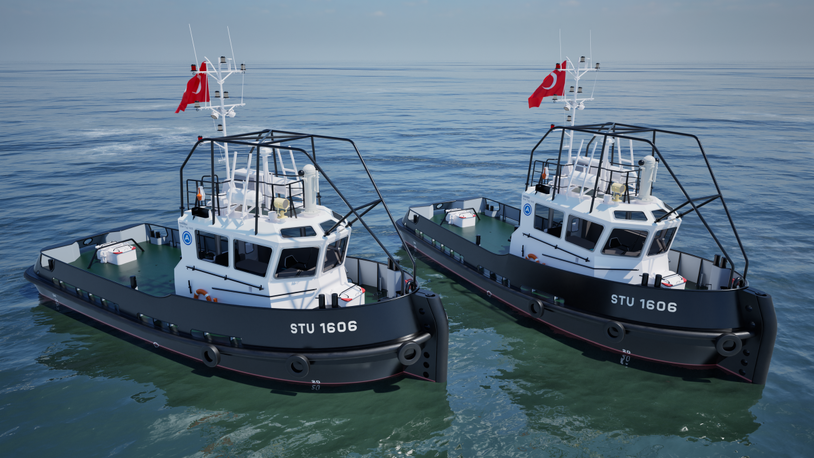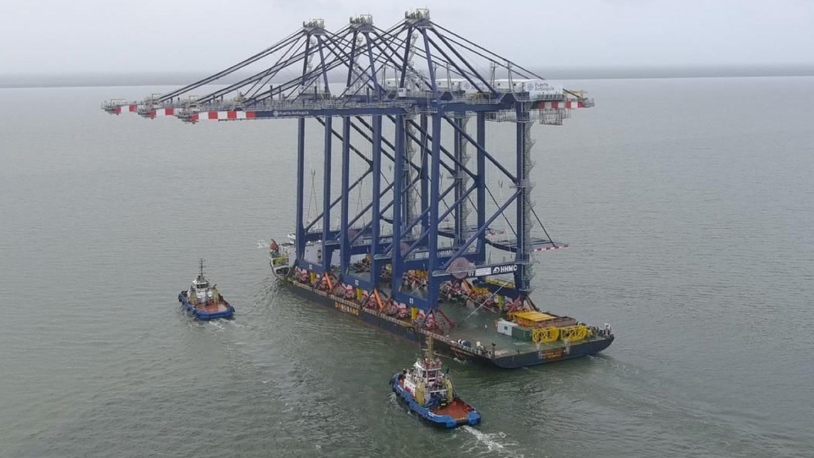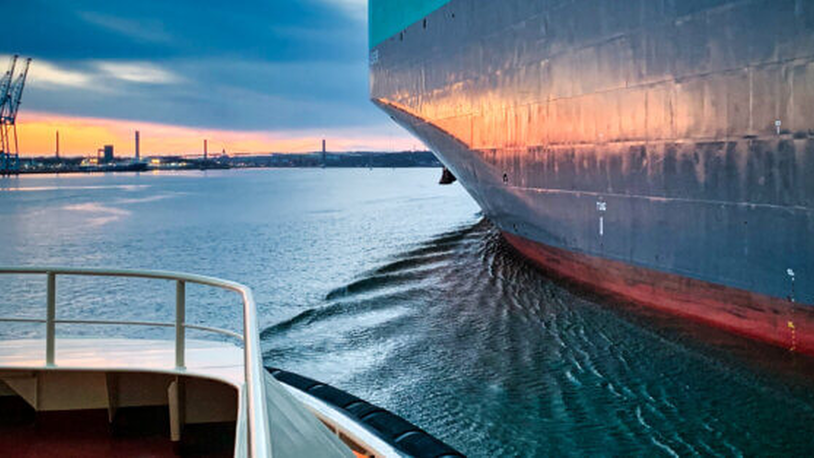Business Sectors
Events
Contents
Increasing tug power in small design packages
Regulatory constraints are guiding harbour tug design selection as much as ever before, but the implications of opting for more compact sizes need to be fully understood, writes Clive Woodbridge
Canada’s Robert Allan Limited enjoys a significant market share within the harbour, and other tug markets, and as such is ideally placed to assess prevailing design trends. Last year more than 80 tugs were built to its designs worldwide, estimated to represent more than 30 per cent of the market outside of Russia, China and Indonesia, for which reliable figures are hard to come by.
An analysis of Robert Allan-designed deliveries in 2016 illustrates an interesting fact. As Robert Allan, executive chairman of the company, observes: “Our data shows clearly that demand from tug owners is heavily influenced by the need, real or perceived, to avoid regulatory hurdles in their fleets.” Tugs of 24m and below fall outside of the Sub-Loadline Convention, while those under 500gt - which equates to about 32m - do not need to comply with Solas or other international manning and licensing requirements. Around 50 of the tugs supplied to Robert Allan designs last year were either 24m or 32m in length, more than 60 per cent of the total.
For designers, the challenge is to meet the demand of the market to overcome such regulatory hurdles, but without sacrificing power and performance in working alongside today’s larger ships. Mr Allan is concerned that the implications of these converging requirements is not being fully grasped by all concerned.
He explained: “It is abundantly clear to me that the entire market does not understand where the safe limits of power/displacement or power/length ratios really are today. With large power in small packages, tug performance takes on entirely new complexions beyond classical stability issues. Many tugs have the ability to overpower their own safe operating capabilities, and this limit of capability is extremely complex and very difficult to predict, greatly affecting a tug’s fitness-for-purpose.”
There is, as a result, a critical need for harbour tug designers to meet owners' need for regulatory-compliant tugs, without compromising on delivering maximum safety. Mr Allan stresses that safety remains his company's primary objective. He added: “We are thankful that this safety-based approach is reflected in the fact that, as we near our one-thousandth tug delivery in 2017, we have not had a casualty in any of our designs since the early 1960s, and that was an incident which was operation-related and not a design issue.”
He continued: “It is also heartening to note that at least some classification societies are taking active steps to upgrade their regulations for tugs to ensure that stability and safety criteria reflect modern design trends, and the very different handling characteristics associated with omni-directional propulsion compared to classical single or twin-screw propulsion upon which most current regulations are based.”
Tug safety will remain a primary focus of harbour tug designers and operators alike, although Mr Allan notes that there are concerns within the industry about tug safety. He suggests these are not unwarranted in view of a number of serious losses in the past few years. However, he does not believe this reflects any widespread failing of current designs generally. Mr Allan explained: “It is more likely a case of some marginal designs being used in situations beyond their ability. We believe the answer to safer tug operations lies in addressing all aspects of tug operation, not simply basic stability criteria, and identifying the boundaries of operation in terms of types of work, speed, manoeuvring, sea states and other factors. Moreover it is imperative that crews be fully informed of where these safe limits are, and how to best handle the tug in typical ship-handling operations.”
In this context, Mr Allan draws attention to a fundamental challenge facing the tug designer of today. This is to gain a complete understanding of the range of operations for which each tug is being designed and used. He continued: “That is not an easy thing to do when our office may be thousands of miles from the owner’s base. But we work hard to meet clients and to understand their needs and modes of operation.”
The tug market is very competitive, with cost a key factor in choosing design and shipyard. But, Mr Allan points out that quality construction and high-performance come at a premium; considering only short-term savings may have a longer-term downside. The need for manoeuvrability, while handling ever bigger vessels, is also clearly influencing design thinking.
Mr Allan points to some recent developments from his design office, including the RAVE and Carrousel-RAVE designs, as well as the latest generation ART Rotor Tugs and VectRA (VSP) designs. He said: “All of these are primarily designed for close quarters ship-handling requirements, while moving ever larger ships in more demanding conditions. That requires carefully planned deck layouts with the best possible all-round visibility, fast-responding propulsion and steering systems with precision positioning control, high-performance winches and robust fendering. And all of this must be supported by an extremely robust and well-constructed hull.”
Looking at tugs of tomorrow, Mr Allan anticipates that it will not be long before the autonomous tugboat is a reality: “That may be 5 years or even 10 years away, but we are convinced it will happen, and most likely in the form of the RAmoRA master-slave concept we introduced in 2015, and the technology for which we continue to refine.” The hurdles to the adoption of this technology are not technical but regulatory and jurisdictional, Mr Allan suggested.
But, overall, there may be more continuity than change in the harbour tugs of the future. “In spite of the potential for these ‘Towbots’, there is also no question that the basic tugboat will have a place in maritime commerce for many years to come,” Mr Allan commented, adding: “In all likelihood the tugs of 5 or 10 yearstime may not be terribly different to tugs of today. That, however, presupposes that the size of ships will not continue to escalate as it has over the past decade, as ship size is the dominant determinant of tug size and power.”
He believes there will certainly be more focus on alternative energy options in tugs, and he expects that with better and more cost-effective battery technology the hybrid tug should emerge as a very viable alternative to traditional tug types. Although RAL currently has four major LNG-fuelled tugs under construction, he believes this type is less likely to be widely adopted. The main factor working against LNG-powered tugs is the inefficiency of space utilisation on such vessels and the associated premium in cost.
Mr Allan also predicts a bright future for tugs with double-ended propulsion such as the RAVE, Carrousel-RAVE and Rotor tug types. “These specialised tugs will find niche applications in ports with very restricted spaces, in major canal applications, and for specialised escorting applications,” he suggested.
Related to this Story
Events
Maritime Environmental Protection Webinar Week
Cyber & Vessel Security Webinar Week
The illusion of safety: what we're getting wrong about crews, tech, and fatigue
Responsible Ship Recycling Forum 2025
© 2024 Riviera Maritime Media Ltd.












